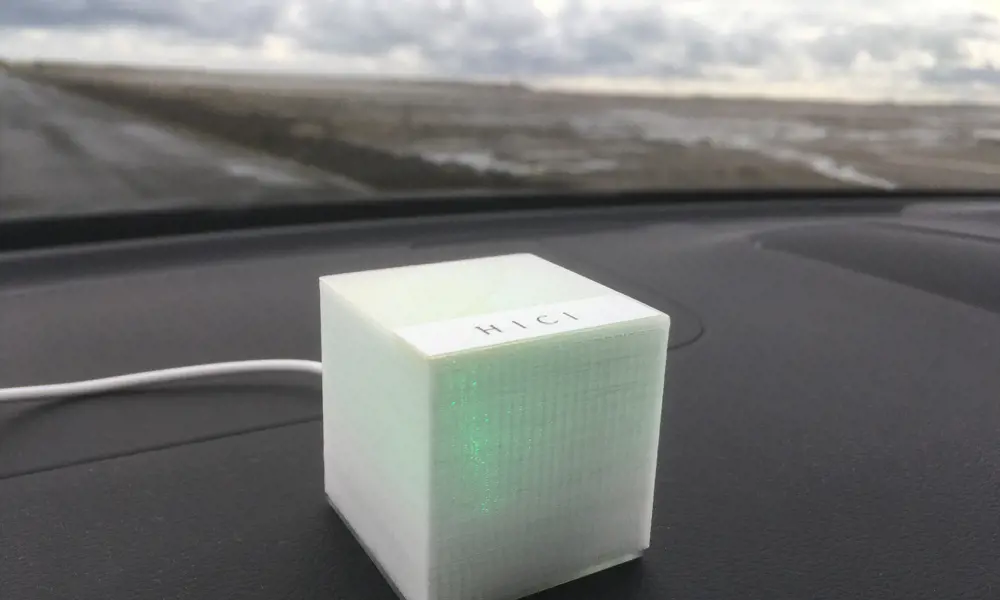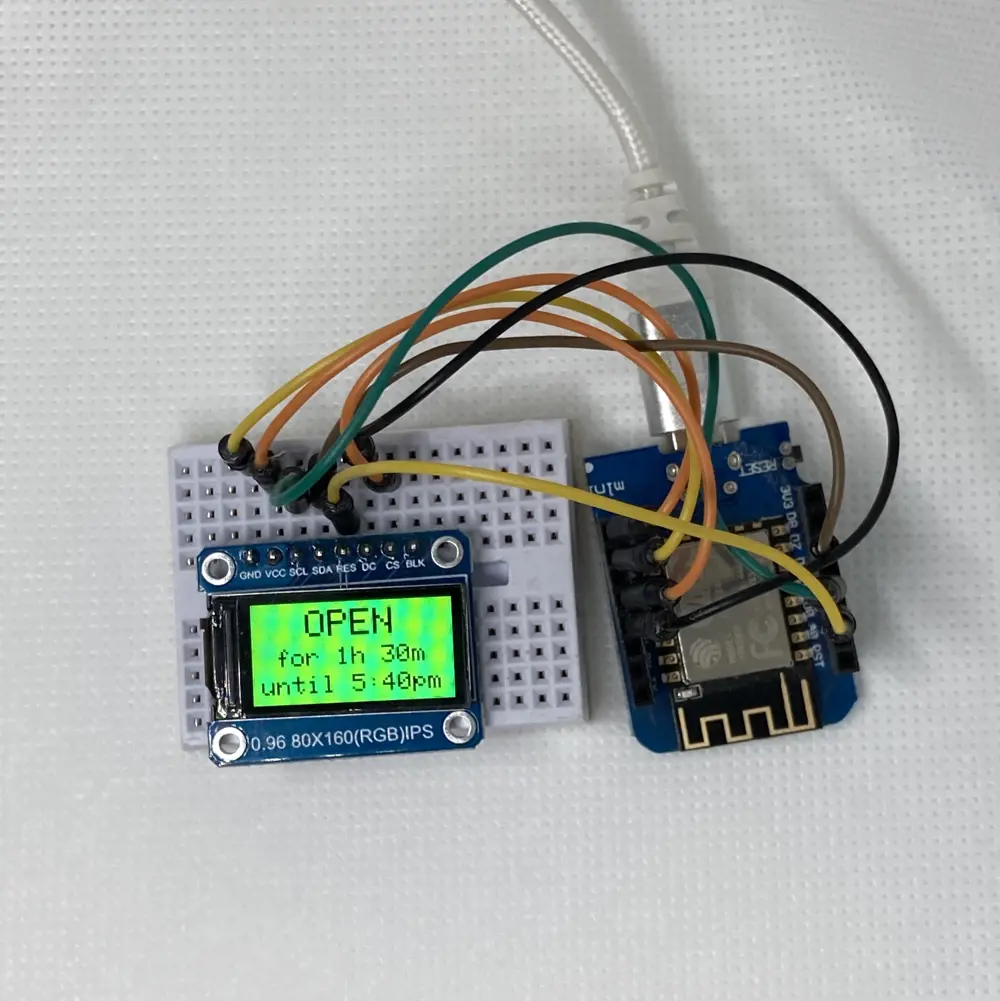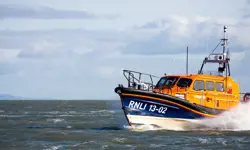
Traffic lights for the tide
Twice a day, the Holy Island of Lindisfarne is cut off from the mainland by fast-moving tides. Almost monthly, the Royal National Lifeboat Institution (RNLI) is called out to rescue the occupants of cars stranded after the causeway floods. Northumberland County Council publishes a monthly table of safe and unsafe crossing times on its website, but Professor Andy Stanford-Clark, Chief Technology Officer for IBM in UK and Ireland, had an innovative idea to use the Internet of Things (IoT) to create an easy-to-read traffic light system.
The Holy Island Causeway Indicator
The resulting Holy Island Causeway Indicator (HICI) is a small device that allows visitors and residents to quickly see the current state of the causeway. The 40-millimetre cube is 3D printed in translucent plastic. During safe times it glows green, while during unsafe times it turns red.
Professor Stanford-Clark wanted to clearly convey the information about whether the causeway was open or closed. The original design brief was to control traffic lights at the ends of the causeway, but after meetings with the Highways department, and vendors of traffic light and road signage equipment, it quickly became apparent that some product changes would be required for remote operation.
Instead, Professor Stanford-Clark decided to use the IoT to publish the important information. He analysed the requirements of the system and quickly eliminated physical sensors because of reliability, power and connectivity constraints. Instead, he used data from published tide tables from oceanographic models to indicate when it was safe to cross the causeway.
He had already developed a Wi-Fi-connected IoT device called GlowOrb, which contains a microcontroller and a red/green/blue LED bulb, the colour of which can be controlled via an MQTT connection to the IBM Watson IoT Platform (a server that appropriately routes the messages it receives). This could readily be adapted to be the output device.
Integrating the device with tidal data
The council webpage is cleanly formatted with a row per day, and up to two safe (green) and two unsafe (red) time intervals per day. Analysing the HTML of such a table is quite easy and reliable, as long as the design of the website is not changed in a way that invalidates the code. The project initially used this page as a data source for the safe and unsafe tide times, but has since been granted access to the application programming interface (API) behind the web page, which is immune to website redesigns and is more easily accessed.
An application running in the Cloud, written in the Node-RED ‘low-code’ programming environment, is triggered to run each day just after midnight. The tide times for the next 24 hours are retrieved through the API, and the content is analysed to determine times of the safe/unsafe transitions. These times are pushed into an event queue and tagged with whether it is a transition to green (safe) or red (unsafe).
The small device is powered by USB and can be placed in a prominent position, so visitors and residents can see at a glance when it’s safe to cross

A prototype of the HICI displaying a countdown clock
Another flow in Node-RED runs every minute. This looks at the transition time at the head of the event queue and whether it’s time to change colour. It then publishes the appropriate colour to the MQTT broker to which all the indicators are connected. They all receive the new colour command and change colour to reflect the new state of the causeway.
Initial buyers of the HICI device gave feedback that a countdown to when the causeway was next open or closed would be valuable, as was knowing the actual time of the transition. This led to two further prototypes being developed: a countdown clock and a tide time display device.
The small device is powered by USB and can be placed in a prominent position, so visitors and residents can see at a glance when it’s safe to cross – and each purchase includes a donation to the RNLI.
***
This article has been adapted from "Innovation watch- Traffic lights for the tide", which originally appeared in the print edition of Ingenia 85 (December 2020).
Keep up-to-date with Ingenia for free
SubscribeRelated content
Maritime & naval

Modelling ships in danger
Stricken ships in danger of breaking up, sinking, capsizing or losing their fuel or cargo need expert help to be rescued. Lloyd’s Register’s Ship Emergency Response Service (SERS) was set up to provide this support.

Quieter, more efficient propellers
Göran Grunditz, Manager of the Rolls-Royce Hydrodynamics Research Centre, explains the challenges when reducing noise from marine propellers for passengers onboard ships and for military vessels that seek to avoid detection, while maintaining a high thrust per input power and maximising efficiency.

Building Britain's biggest warships
The 1998 Strategic Defence Review called for the UK Armed Forces to be able to operate with more agility to confront situations on a worldwide basis and resulted in the requirement for two new Queen Elizabeth Class aircraft carriers, HMS Queen Elizabeth and HMS Prince of Wales, one of the UK's largest engineering projects.

Against the tide
The Royal National Lifeboat Institution introduced the Shannon class all-weather lifeboat in 2014, which uses cutting-edge technology, is faster and more manoeuvrable than existing vessels, and has a quicker and safer launch and recovery system. Read about the design and production of the lifeboat.
Other content from Ingenia
Quick read

- Environment & sustainability
- Opinion
A young engineer’s perspective on the good, the bad and the ugly of COP27

- Environment & sustainability
- Issue 95
How do we pay for net zero technologies?
Quick read

- Transport
- Mechanical
- How I got here
Electrifying trains and STEMAZING outreach

- Civil & structural
- Environment & sustainability
- Issue 95